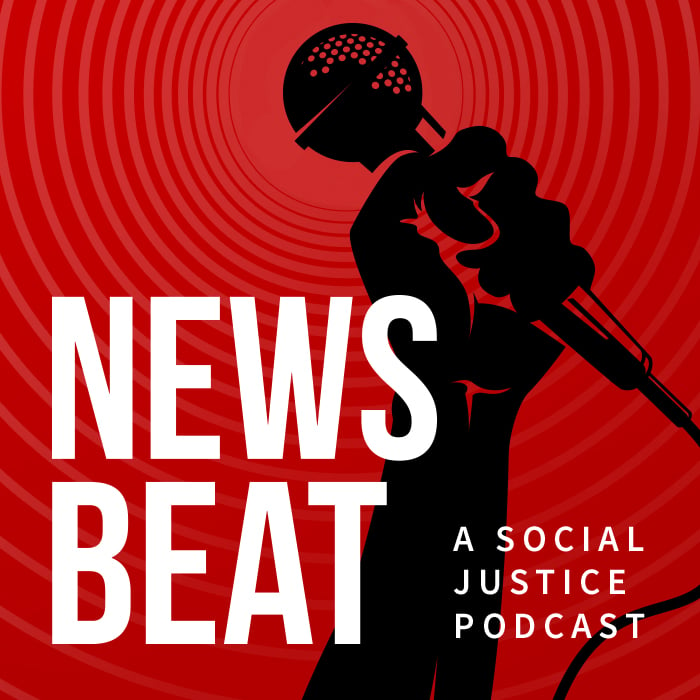It was replete with everything from the eventual winner boasting about grabbing women by the genitals, renewed claims of sexual harassment, a self-professed socialist emerging as a mainstream contender, hacked emails, accusations of Russian meddling, and xenophobia run amok.
To put its contested nature in perspective, it took just a single day after Donald Trump’s inauguration for the most historic protest in U.S. history to flood dozens of American cities, and perhaps change the course of President Donald Trump’s entire presidency, even before it got off the ground.
While Trump’s victory was a gut-punch to millions of Americans, the tsunami of outrage barreling through Washington, D.C. was a visceral rebuke to the popular vote-losing president’s populist rhetoric. Whether by Tweet or off-the-cuff remark, Trump demeaned everyone—from Mexicans and Muslims to African Americans and pretty much the entire LGBTQ community—and anyone, really, that he felt maligned by.
One day after his inauguration, millions of women stormed American streets nationwide to demand equality, proudly donned bright pink “pussy hats” and vowing that enough was enough. And this was before the #MeToo movement unleashed tremors of fear across nearly all (male-dominated) industries. Finally, an era of impunity was being eradicated, albeit frustratingly slow, resulting in the downfall of powerful men like Harvey Weinstein, Matt Lauer, Bill O’Reilly and Charlie Rose. Many more have been called to question for their reprehensible behavior.
The nationwide demonstrations made the Women’s March one of, if not the largest rallies in American history, and it offered a glimmer of hope for those appalled by Trump and everything he represents.
Aside from the sheer show of force, the marches were among the most effective in recent history, too. Perhaps inadvertently, it served as a springboard for women to directly challenge the male-dominated political class. As a result, more women than ever before are running for elected office.
Confronted by what many progressives feared was the birth of an openly fascist White House, the Women’s March served as confirmation that democracy was indeed alive and well within the United States. Contrast the scores of those marches, which largely went off without police instigation, with a more modest protest in the nation’s capital a day earlier, when protesters were arrested en masse in what would serve as a prologue to a protracted court battle that has tested the limits of First Amendment protections.
Collectively known as the J20 protesters, hundreds of people, some of them self-proclaimed anti-fascists, were arrested by D.C. police, journalists included, on felony rioting charges. At one point, police used a controversial technique called “kettling,” in which they surrounded, penned, and arrested about 100 people in response to isolated acts of vandalism. Altogether, more than 200 people were arrested and charged. The controversial arrests received little media coverage, having been overshadowed by Trump’s dark inauguration speech and the subsequent Women’s March.
The Women’s March and the pro-gun control March for our Lives movement are outliers in that both were largely devoid of tense standoffs with authorities. Yet all around the country, peaceful protesters are being met with literally armed resistance from local authorities, in the form of a militarized police response and the deployment of rubber bullets, water cannons and high-powered mace—the clear implication being that dissenters are presumed dangerous.
In several cases, American streets looked like small battlefields, with tear gas billowing among crowds and bomb-resistant military vehicles defiantly humming along city streets.
“It was so important for us to create this space in Standing Rock with these encampments, where it was not only a safe space, it was a space of resistance and a reminder of everything our ancestors did for us to have the ability to say ‘No more.’
– Eryn Wise, Youth Voice Amplifier for Seeding Sovereignty
The effect of such protests no doubt left a mark on local officials across the country. In response, state legislators nationwide have proposed at least 60 anti-protest bills since the indigenous-led Standing Rock protests in 2016. That the far majority of these bills have been defeated is hardly cause for celebration because of the resulting chilling effect these proposed laws have on protests, civil liberty advocates warn.
Thus far, four of the nine bills that have voted into law are in North Dakota. Other states that have enacted anti-protest measures include South Dakota, Oklahoma, Missouri, Tennessee, Virginia, Georgia and Florida.
“One of the big trends that we’ve seen with this anti-protest legislation, generally, is that it seems to be reacting to the most successful tactics that are used by protesters,” Vera Eidelman, William J. Brennan fellow with the American Civil Liberties Union (ACLU)’s Speech, Privacy, and Technology Project, told News Beat podcast, adding that many of the proposed bills are in reaction to protests about police killings and environmental justice.
Some of the most tense demonstrations have occurred in cities crying out for police reform. From Ferguson and Baltimore to Chicago and New York City, those directly affected by racist policies are more likely than not condemned for raising their voices. Oftentimes, those speaking out are the ones assigned blame for problems in their communities and put down for proactively raising their voices during times of tumult. Alas, instead of addressing the issues directly, legislators are coming up with creative means to suppress dissent. And the world is watching.
The anti-protest bills prompted the office of the United Nations Human Rights Commission of the High Commissioner to write a stunning letter to the United States, condemning these actions and reminding officials of the country’s obligations under international law. Similarly, nonprofit Amnesty International in 2016 sent a delegation of human rights observers to North Dakota to monitor the events then-unfolding at Standing Rock.
The U.N. Commission said the introduction of such bills from 2015 to 2017 would “severely infringe upon the exercise of the rights to freedom of expression and freedom of peaceful assembly in ways that are incompatible with U.S. obligation under international human rights law.”
Among the bills the U.N. Commission found troubling was Senate Bill 550 in Arkansas, which would criminalize “unlawful mass picketing.” Some states went as far as proposing bills that would make it illegal to obstruct traffic, and included a clause that would protect motorists who “unintentionally” injured or killed a protestor.
A similar bill introduced in January 2017 in Indiana would give law enforcement “broad discretion,” the U.N. Commission warned, to use “any means necessary” to clear protesters obstructing traffic.
In Iowa, “intentionally” blocking traffic on “certain” roadways could result in a felony conviction and up to five years in prison.
A bill proposed in the Oregon State Senate calls for public college students convicted of participating in a “riot” to be expelled.
The list goes on and on.
In reality, law enforcement officials don’t require approval from legislators to crack down on demonstrators, as we’ve seen in protest after protest in recent years. Nor, it seems, is there anything stopping private military contractors from building counter-terror profiles of protesters, infiltrating their ranks, and using drone technology to track their movements—as was the case with mercenaries called upon to provide security at Standing Rock.
Critics of these extraordinary tactics can’t help but notice the irony in this new anti-protest movement: A nation borne out of protest and open revolt, whose foundation was built on the right to freely assemble, is uncomfortable—afraid even—of what mass mobilizations are capable of.
Mercenaries Unite
Eryn Wise encouraged her brother and sister to visit the Standing Rock reservation in the Dakotas, assuming it would be a good experience for them both. In August 2016, she’d end up there herself, quickly rising to a youth leadership position.
Wise was among hundreds of activists who descended on North Dakota in late 2016 to protest the construction of a controversial oil pipeline. Indigenous leaders had feared development of the Dakota Access Pipeline (DAPL) would endanger nearby waterways and threaten sacred sites. At a more visceral level, Indigenous groups were condemning what they deemed flagrant disregard for the 1851 Treaty of Fort Laramie. It was in that agreement that the Sioux and several other Native American nations agreed to part ways with areas east of the Missouri River in return for land inside five states, including the Dakotas.
Protesters withstood resistance from state officials, law enforcement and hired mercenaries. They also had to contend with the natural elements, including freezing temperatures, as their demonstrations carried on well into winter. The coalition of activists included environmentalists and other Native American groups, with their ranks swelling to an estimated 10,000 at its peak.
The Standing Rock protesters, or “water protectors” as they became known, viewed the U.S. government-supported construction of the pipeline as an escalation of a long history of oppression of Indigenous groups.
“It was so important for us to create this space in Standing Rock with these encampments, where it was not only a safe space, it was a space of resistance and a reminder of everything our ancestors did for us to have the ability to ‘No more,’ Wise said. “Like, we won’t handle you attack our Earth, you know, condoning violence against the Earth.”
As the battle over the contested land reached a fever pitch, demonstrators were drenched with water cannons, shot with rubber bullets, and dusted with high-powered pepper spray.
“We knew that we were being surveilled day and night.”
– Eryn Wise, Youth Voice Amplifier, Seeding Sovereignty
In September 2016, a private military contractor unleashed attack dogs on demonstrators. Video of the intentional maulings shocked people nationwide while going viral, registering more than 1.3 million views and counting. Among the journalists covering the incident was renowned independent reporter Amy Goodman of Democracy Now!, who was arrested on trespassing charges. In October, a judge dismissed them, citing a lack of evidence.
Although Freedom of the Press is enshrined in the U.S. Constitution, Goodman’s arrest is not a solitary instance, especially when it comes to reporting on protests. In 2017 alone, nearly three dozen reporters were arrested covering protests, according to the U.S. Press Freedom Tracker.
As the months dragged on at Standing Rock, authorities unleashed ever-more aggressive tactics when confronting protesters. Wise recalled how they deployed MRAPS, which are synonymous with warzones, as well as water tanks, and tear gas. Remarkably, authorities soaked demonstrators with water cannons, despite dangerous, sub-zero temperatures.
One woman who was shot with a concussion grenade had most of her forearm blown off, Wise said. Luckily, she was able to save her arm, but it no longer functions at 100 percent. Another woman lost her eye in similar circumstances.
Then of course, were the military contractors that infiltrated camps and befriended protesters.
One of the primary contractors at Standing Rock was a firm called TigerSwan, a counter-intelligence outfit known for its work in the Middle East on behalf of the U.S. government.
In May of 2017, The Intercept reported on internal TigerSwan documents revealing how the firm, which was hired by Energy Transfer Partners, the company building the pipeline, spied on protesters and went as far as likening demonstrators to “Jihadi fighters.”
Alice Speri, one of the journalists who reported on TigerSwan’s activities, told News Beat the documents exposed a massive surveillance operation that lasted months. Along with surveilling protesters, the firm “infiltrated activists communities, both at Standing Rock and then later in neighboring states, and they started following progressive groups all across the country,” she said.
“And the documents we obtained include detailed descriptions of all this surveillance work,” Speri continued. “They named hundreds of people that were involved in pipeline protests. And in some cases, they revealed that the private security firm were following them around, chasing them with their cars. Definitely doing a lot of surveillance on social media as well as doing radio eavesdropping and using all kinds of technologies to listen in on these movements.”
Speri found the comparison to a jihadi insurgency laughable.
“They have this absurd quote that I like to read to people because it kind of just shows the insanity of it all,” she said. “What they basically say: ‘that the water protector movement generally followed the Jihadist insurgency model while active. And so we can expect individuals who fought for and supported it to follow a post-insurgency model after its collapse.’”
“And so these reports draw comparisons to post-Soviet Afghanistan and say that ‘We can expect to see the continued threat of the anti-DAPL diaspora and aggressive intelligence preparation on the battlefield and active coordination between intelligence and security elements are a proven method of defeating pipeline insurgencies.’ This is just bonkers, right. We’re talking about a battlefield and war, and this is a peaceful protest on U.S. soil.”
More: Breaking down the true meaning of ‘Jihad’
Not only were demonstrators met with physical resistance from TigerSwan and similar security firms, but there was also a massive uniformed police presence that included local and state authorities, as well as the FBI.
By October of 2016, more than 100 protesters had been arrested. Amnesty International (AI), the global human rights organization, was so disturbed by reports of aggressive policing that it sent a delegation of human rights observers to monitor law enforcement’s interactions with protesters. That was on top of previous letters Amnesty International had sent to local authorities reminding them of “human rights standards on the policing of protests.”
“People here just want to stand up for the rights of Indigenous people and protect their natural resources,” Eric Ferrero, director of communications for AIUSA, said at the time. “These people should not be treated like the enemy.”
The leaked TigerSwan documents also reveal what appears to be inappropriate collaboration between the firm and local authorities.
On the surface, local law enforcement is entrusted with the protection of their community. However, “That kind of just went out the window at Standing Rock,” Speri said.
“What we know from our reporting is that TigerSwan, and other private firms, regularly communicated with law enforcement,” she continued. “They shared with them their threat assessments, and all these memos that we obtained, they regularly shared with police.”
Wise said no one was surprised they were the target of a sophisticated surveillance apparatus.
“We knew that we were being surveilled day and night,” she said, adding that helicopters were whirring over the camp for hours on end.
While authorities were able to keep a close eye on the camps from high above, media and other members of the public were barred from using aerial technology to document what was happening because of a “No Fly Zone” put in place by the Federal Aviation Administration (FAA), according to the ACLU’s Eidelman.
The ban made it impossible for the press to document events on the ground from the air, especially during some of the most tense standoffs between demonstrators and the police, she noted.
In short, the pipeline protesters experienced some of the most heavy-handed and restrictive anti-protest tactics that have been deployed in cities across America, but all at once. Months of dissent meant a constant militarized police presence, supported by a massive surveillance operation.
Speaking broadly, Eidelman raised the alarm about this and other measures being used elsewhere to stifle lawful assembly.
“I think it’s deeply troubling that a country that is unique in its recognition of the importance and value of free speech clamps down on free speech,” she told us.
Democracy Under Attack
Some of the most passionate and widely attended demonstrations have occurred since Trump’s election. After Trump fulfilled his promise to ban Muslims from entering the United States (before the courts stepped in and blocked those said attempts), thousands of people across the country flooded major airports. The massive show of force made it nearly impossible for Americans to forget the issue, but also served as living, breathing reminders that millions in the United States abhor Trump’s xenophobic policies.
Yet protests occur every day across America, and those hitting the streets are still getting arrested.
Just this week, dozens of people calling for an end to economic injustice and exploitation were arrested during coordinated rallies to support the modern-day Poor People’s Campaign.
Among those taken into custody were Revs. Liz Theoharis and William Barber, the movement’s co-directors.
Not all arrests make the national news, however.
In the case of the Trump Inauguration Day protesters, their prosecution became ever-more controversial, when a Washington, D.C. Superior Court judge ruled prosecutors had violated the Brady Rule for withholding evidence to defendants. Of the more than 200 people who had been arrested, 129 had their charges dropped, while a half-dozen were found not guilty last January. About 60 other defendants are still being prosecuted in what has become one of the most underreported stories of the Trump presidency.
On top of an aggressive law-and-order approach to protests, the nation has also witnessed a wave of legislation that civil liberties groups warn may be unconstitutional.
“One of the big trends that we’ve seen with this anti-protest legislation, generally, is that it seems to be reacting to the most successful tactics that are used by protesters.”
– Vera Eidelman, William J. Brennan fellow with the American Civil Liberties Union (ACLU)’s Speech, Privacy, and Technology Project
Whether the stated reason is to protect local economies, avoid delays at airports, or keep streets free of sign-waving rabble-rousers, there’s been little proof offered to justify such aggressive action, explained Eidelman.
“If that’s the case, I would like to see more facts about…there just isn’t proof that people have had difficulty driving or getting to their planes, even if you think that is as a legitimate of a concern as the right to speak out, which I would find troubling anyway,” she said. “But I think the reasons, the motives vary, but it seems pretty directly tied to seeing protests that worked, that really got their message out, trying to make that harder.”
For Wise and the countless other Indigenous activists who made it their mission to protect lands that were legally promised to them by the aforementioned treaty with the U.S. government, the #NoDAPL movement meant something far greater. It was about everything the water protectors hold sacred. Everything their ancestors fought so hard to protect was under assault.
“We stand to see so much more from losing our humanity and valuing the Earth so little that we don’t even value life itself, and don’t even see a necessity to protect people in any way,” she told News Beat. “I think we stand to lose that, and we also—we’re gonna lose our home. We don’t really have a say in what the Earth is going to do, and as proven through time, the Earth will shake off whatever is on top of it and reboot, and I 100-percent wouldn’t blame the planet for thanking us for diligently fucking her up and then making her exit. I think that it would be her right. And those of the ancestors that came before us to say, ‘What the hell. We did all we did so you can be there, and this is how you repay us?’
“‘Nothing left for future. Only enough for yourselves.'”










